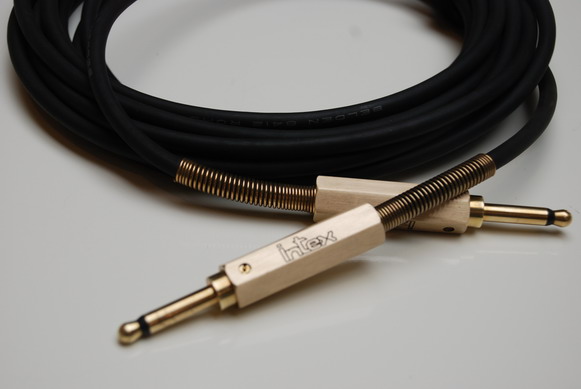
At the most recent winter NAMM show, we were walking the aisles when we came upon a cable manufacturer that we had never heard of so we stopped to read the provided brochure and were amazed at the claims that were being made. Initiating a conversation with the gentlemen manning the booth proved no better as none of our technical questions were answered with any level of engineering knowledge (this from a company selling a 10-foot "Show Special" instrument cable for $900).
We visited several other cable manufacturers, and the same song was sung by all. So we decided to write down the 9 biggest cable myths musicians should know about.
1
Cables are not directional; music is an alternating waveform that goes back and forth no matter which end of the cable is plugged into whatever. The only time a cable could be construed to be directional is if you float shield on one end, which you should only do under controlled circumstances.
2
Cables never need a "burn-in" period in order to sound better; they will sound the same from the moment of inception to the last second before death.
3
Recently seen in a cable advertisement "made up of different diameter strands to better carry the full frequency spectrum of sound that any amp is capable of making." Having multiple-sized conductors in a cable does absolutely nothing for sound or durability.
4
Skin effect, while very complicated but in the most basic words, is a phenomenon whereby alternating current at high frequencies ride towards the outside of the wire instead of throughout the entire cross-section (like direct current) thereby increasing the impedance. It has negligible effect on audio signals. Highly dependent on wire size and composition, as a general rule, the worst-case scenario is impedance increases 3% at 20 kHz and decreases as you go lower in frequency.
5
There is no "sweet spot" in cable capacitance. Manufacturers strive to reduce cable capacitance as much as possible by adjusting the distance between conductors and using insulators with lower dielectric constants. Capacitance is generally bad unless you're Jimi Hendrix who used a coily cable loaded with it to kill the harshness of the tone, his words, not mine.
6
Cables cannot enhance your tone or do anything positive to it; it can only do negative things to it.
7
The purer the copper, the better the sound. Sounds good but unfortunately, no scientific study has shown this to be true. ETP copper, the kind in Belden 8412, is 99.9% pure with an IACS (conductivity) rating of 100%, Oxygen-free copper is 99.95% pure and has a minimum IACS rating of 100%. Oxygen-free electronic copper is 99.99% pure and has a minimum IACS rating of 101%, and the coup-de-grace is that silver, everyone's holy grail of conductivity and perfect sound, has a 105% IACS rating.
Does anybody really think they can hear the 5% difference between ETP copper and silver?
8
"Cryogenically freezing cables improves fidelity or measurably changes electrical properties after the cable is restored to room temperature." Do you really need an explanation for this?
9
Many of the parameters cited in high-end cable literature such as depth, soundstage, or detail have no correlation to any known measurable design parameter. Any cable manufacturer who claims they can scientifically prove their cable is the best sounding is taking you for a ride.
The internet is full of useful and useless information on this subject. If you would like to read more about this, we would be more than happy to provide additional literature for you to read.
